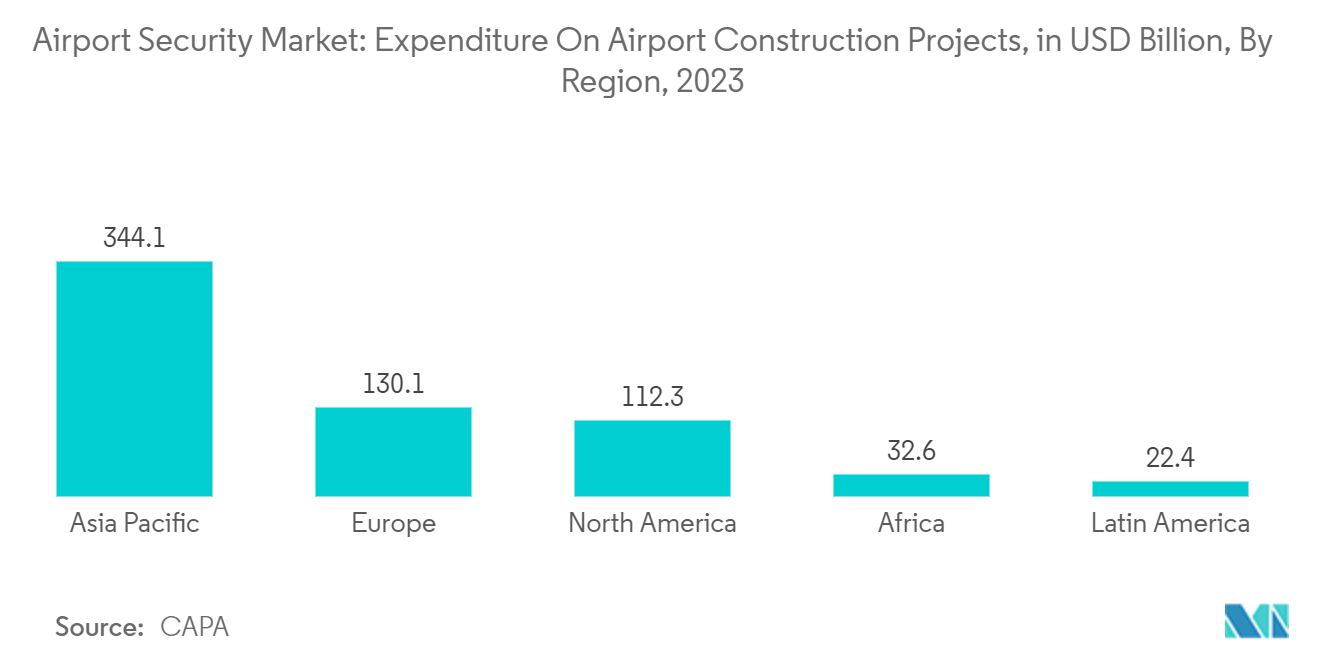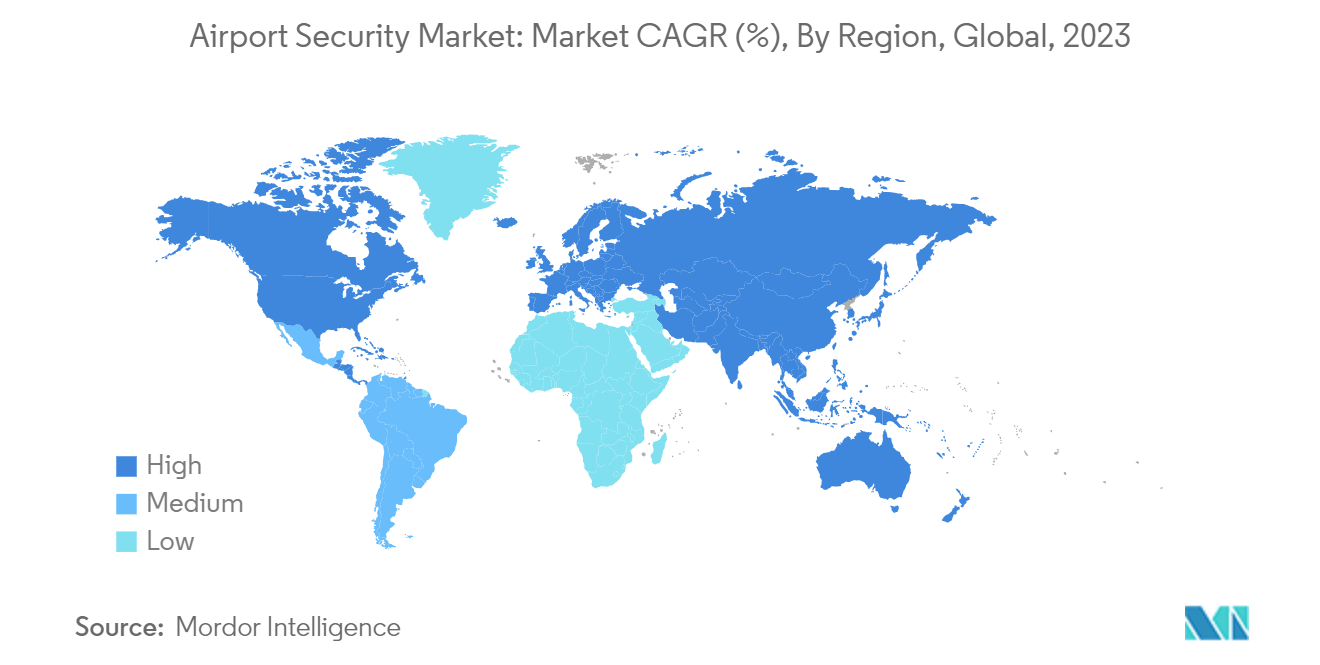Market Trends of Airport Security Industry
Biometric Systems Segment to Experience the Highest Growth During the Forecast Period
- Various airlines and airports test and use biometrics to speed up airport processes like security checks, check-in, or passport control. Some airports in countries like the United Kingdom, the United States, China, Singapore, and Japan use this technology, and various other airports in smaller countries are in the testing phase of biometrics. The US Transportation Security Administration released a roadmap for enhancing aviation security and passenger experience using biometrics to transform the commercial aviation ecosystem by 2026.
- In September 2023, the US Transportation Security Administration (TSA) announced its plans to expand its facial recognition pilot program. The program, used at airport screening checkpoints, will be extended from 115 security lanes to 200 lanes. This initiative uses Credential Authentication Technology with a Camera (CAT-2 ID system). It involves comparing live photos of travelers taken at airport security checkpoints with the photo on their driver’s license or government ID card. This step will not only enhance the security measures at airports but also help minimize the time spent by passengers in security checks.
- Similarly, in May 2022, Fraport, the airport operator of Frankfurt, launched a project called "Biometrics@Controllane" to improve security at staff access control points. Two partners, including Norwegian biometric technology provider Zwipe, were invited to trial this technology at the airport. The biometric-based digital processing of passengers is expected to ease the process at various checkpoints like terminal entry gates, check-in/ bag drop, security check, and boarding gates. Government initiatives toward integrating advanced biometric technology for faster processing of passengers are expected to drive the segment's growth during the forecast period.

Asia-Pacific is Expected to Generate the Highest Demand During the Forecast Period
- Asia-Pacific is anticipated to witness the highest growth during the forecast period. Growing investment plans of the civil aviation authorities to develop new airports and the rising threat of terrorist activities at the airports are driving the market's growth in the region.
- With increasing passenger traffic at the airports, countries like India and China are highly investing in developing new airports, expanding existing airports, and modernizing aviation infrastructure in the region.
- Several regional airports, such as Kempegowda International Airport in Bengaluru, Changi Airport, and Hong Kong International Airport, are leading the race in Asia. These airports undertook significant biometric projects that significantly impacted passenger experience in the coming years.
- In September 2022, Perth Airport in Australia tested Amadeus’s biometrics technology, which uses passengers' faces as their boarding passes for Singapore Airlines flights. These investments are expected to create demand for new airport security systems for airports and other facilities during the forecast period.


